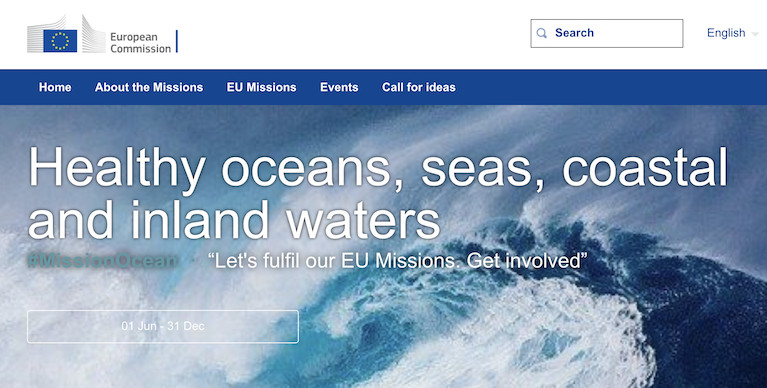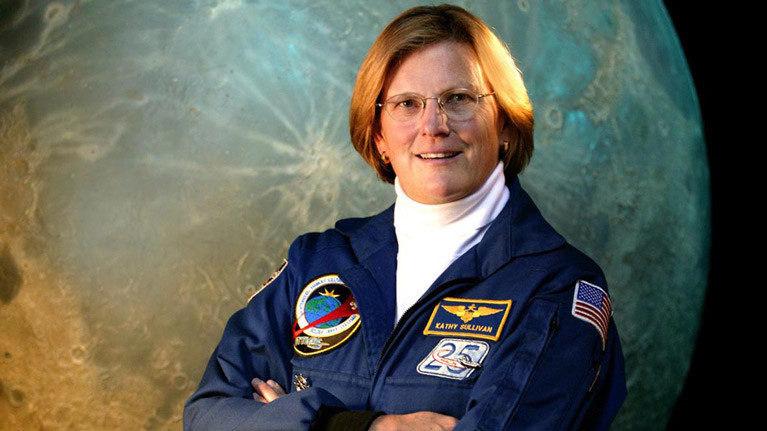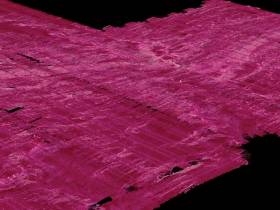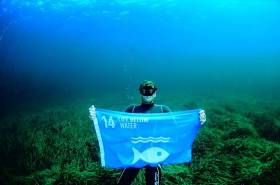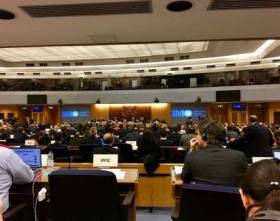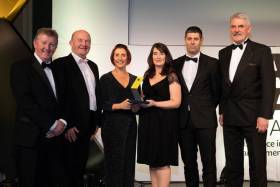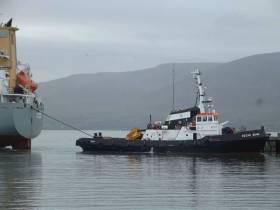Displaying items by tag: marine environment
Northern Ireland Boat based Environmental Charity Citizen Sea Presents Events in Belfast
Northern Ireland’s first boat-based environmental charity, Citizen Sea, will be presenting several events about the marine environment in Northern Ireland in Belfast from the 24th of February-10th March.
Citizen Sea is a grassroots charity, empowering people to engage with and learn about their local marine environment, using science and experiences to help protect our seas.
Citizen Sea’s vessel has its home in Bangor Marina. It aims is to inspire people through experiences at sea to love, protect and appreciate the marine environment and they engage with people through citizen science, practical action, and education.
On 24th February Marine Biologist Amy Mundye will present Talk and Print at the Belfast Print Workshop in Cotton Court in the city’s Cathedral Quarter. It will feature her published research on microplastics, and hermit crabs and artist Linda Barbour will present a screen printing taster session.
 Marine Biologist Amy Mundye
Marine Biologist Amy Mundye
The event titled the Power of the Sea on 27 February in the Belfast Barge at Lanyon Quay will include contributions from three people whose lives are intrinsically linked to the sea. There will be a talk by Bangor legend Brian Meharg MBE, about his life on the water and with Bangor RNLI. He’s well known as the Bangor Boat Man and has been part of the boating community in North Down for many years. Brian will be telling some amazing stories from his time with the lifeboat, and life on the open seas. Jessica McWilliams will share what the sea means to her personally and why she's hooked on sea swimming! Aileen McClenaghan, who has been employed by a mental health charity for the past 18 years and is currently tutoring Environment and Art classes to adults with learning disabilities, often uses her spare-time at the coast beachcombing and litter-picking. Aileen will be talking about some of her frequent and more unusual finds and how important it is for us all to connect with the sea. This series of events will raise some much-needed funds for activities such as science clubs and training for volunteers, as well as awareness around the marine environment and plastic pollution.
 Photographer Phil Wilkinson
Photographer Phil Wilkinson
On 3rd March at St Joseph’s Church in Sailortown, photographer Phil Wilkinson who is a recreational SCUBA diver with Seasearch Northern Ireland, will be showing some incredible underwater photos that he has recently taken locally showing the diverse life under the sea. Volunteers like Phil are passionate about recording marine life and helping with conservation issues. And at the same venue on 10th March Sally Chamberlain, Regional Manager Seafish, will talk about her work with the local Seafood industry.
Also present in the Barge will be artist, Grainne Laverty, who will be showcasing some of her work, with a percentage of the proceeds from the sale of paintings donated to Citizen Sea. Grainne says “My current series of work is based on the seas’ ever changing surfaces with an emphasis on the damage done to our seas and the acknowledgement of a sense of ignorance towards it. As well as creating my art to be viewed and enjoyed, I want to raise awareness and connect with a local charity like Citizen Sea”.
Citizen Sea Operations and Admin, Karina Robinson commented; “After a few difficult years in the charity and events sectors, we’re delighted to be hosting this series of talks and workshops. We’ve a brilliant line up of local speakers and experts who are immersed in life in and on the sea. Our country has historically been shrouded by myths and legends, with the sea being at the centre of many of these tales. We hope that through these talks we can inspire people to reconnect with the sea and the coastal communities who strive to protect it. We’re incredibly excited to be included in the NI Science Festival 2022 programme, encouraging local people to get involved in science”.
Tickets are available here
European space satellite imagery could replace human monitoring as an effective “health check” of Ireland’s coastal environment, according to new research by NUI Galway scientists.
As The Times Ireland edition reports, earth observation data sets recorded by European Space Agency (ESA) satellites can monitor the spread of algal blooms and other key information which is normally collected in field surveys.
A study of satellite imagery for eight Irish estuaries led by NUI Galway (NUIG) scientist Dr Liam Morrison with researcher Sita Karki showed this type of monitoring could be very cost-effective.
Estuarine and coastal waters worldwide have been facing increasing challenges from generalised use of industrial fertilisers since the second world war, the researchers note.
Macroalgal blooms are regarded as a “clear sign” of nutrient over-enrichment which estuaries are particularly susceptible to - reducing both fish species and water quality.
An Environmental Protection Agency (EPA) report of 2019 found that transitional waters - as in estuaries and coastal lagoons - in Ireland have poorer water quality than groundwater systems, rivers, lakes, and coastal waters.
The research team analysed imagery for the eight Irish estuaries captured by the Sentinel-2A/B, Landsat-5, and Landsat-8 satellite missions.
The locations ranged from Rogerstown, Malahide and the Tolka on Dublin’s north side to Bannow Bay, Dungarvan and the lower Blackwater in the south-east to Courtmacsherry and Clonakilty in Co Cork.
The study was a collaboration between NUIG and the Irish Centre for High End Computing, and was funded by the EPA.
It is published in the current issue of Frontiers in Marine Science.
Read more in The Times Ireland edition here
Inshore Fishers & Irish Whale & Dolphin Group Welcome Temporary Reinstatement of Inshore Trawling Ban
Marine environment and inshore fishing groups have welcomed a temporary reinstatement of a ban on larger vessels trawling within six nautical miles of the Irish coast.
As The Times Ireland edition reports, Minister for Marine Charlie McConalogue has also welcomed the decision by the Court of Appeal to reinstate a policy directive underpinning the ban, pending a full hearing of the case in late June.
The National Inshore Fishermen’s Association (NIFA) and the Irish Whale and Dolphin Group (IWDG) paid tribute yesterday to Mr McConalogue’s department.
IWDG co-ordinator Dr Simon Berrow said hoped it would “pave the way for full restoration of the ban at the next court hearing”.
“Much of the activity inside the six nautical mile limit by a small number of larger vessels is over for the winter, so it won’t make any practical difference now,” Padraig Whooley of the IWDG pointed out.
However, for marine mammals like the recent Arctic walrus recorded on Kerry’s Valentia island, it is a “positive move”, he said.
NIFA secretary Alex Crowley also said the ruling was very positive in ensuring the sustainability of stocks for some 80 per cent of the Irish fleet.
However, the Irish South and West Fish Producers’ Organisation chief executive Patrick Murphy said that the directive still required scientific backing to support it.
The policy directive was introduced in March 2019, stating that from January 1st 2020 “all trawling by large vessels, over 18 metres in length overall, in coastal waters inside Ireland’s 6-mile zone was to cease, other than for a sprat fishery which was to be phased out during 2020 and 2021”.
Following a judicial review by two fishermen, the High Court made an order in favour of the applicants last October and the policy directive was declared “void/or of no legal effect”.
Read more in The Times here
Ireland One of Two EU States Selected for Citizen Survey on Health of Marine & Freshwater Environment
Ireland is one of two EU member states selected for a Europe-wide citizen survey on the health of the marine and freshwater environment.
The EU’s mission for healthy oceans, seas, coastal and inland waters is seeking citizens’ priorities in Ireland and Romania on the health of ocean and inland waters.
Former Marine Institute director Dr Peter Heffernan, Ireland’s ambassador on the EU mission board, said the initiative represents the “largest transformation ever in our relationship with the ocean”.
The survey will inform policies on the “right type” of blue economy, and proposals to create a new European ocean agency.
This may be modelled on the US National Oceanic and Atmospheric Administration (NOAA), the scientific agency focusing conditions of the oceans, major waterways, and the atmosphere, he noted.
The EU mission aims to “know, restore and protect our ocean and waters by 2030, by reducing human pressures on marine and freshwater environments, restoring degraded ecosystems and sustainably harnessing the essential goods and services they provide”.
The mission says it is “inspired by the shape of the starfish” in pursuing five interdependent objectives – knowledge, regeneration, de-pollution, decarbonisation and governance.
“Protecting and restoring the health of our ocean is one of the defining endeavours of our time, and citizens are crucial to accomplishing this mission,” Dr Heffernan said, noting that oceans, seas, coastal and inland waters cover around 75 per cent of the earth’s surface.
Marine and freshwater environments provide drinking water, half of the oxygen we breathe and around one-sixth of the animal protein consumed, and have a major influence on weather and climate – also storing more than 25% of carbon dioxide emitted by humans, he noted.
“Knowing, restoring and protecting our ocean and waters is a shared responsibility and will only be possible with the full support of science and people,” Marine Institute chief executive Dr Paul Connolly said, supporting the survey.
“ The people of Ireland have the opportunity to share how the ocean is important to their everyday lives and to outline their priorities for achieving a healthy ocean,” he said.
The survey which runs till the end of August is here
US Astronaut Kathy Sullivan on Deep Sea Diving, Living Through a Pandemic & Ocean Health
US astronaut and oceanographer Dr Kathryn Sullivan has compared the current global situation to being in the midst of a severe storm on a sailing boat in mid-ocean.
In an interview with The Sunday Times, Dr Sullivan, who has Irish roots, said that although she was an optimist, it was “the most uncertain time I have witnessed in my lifetime”.
“You couldn’t even think of putting a sail back up, let alone trimming it, or trying to steer..only to ride it out as best one can...” she said.
“ It’s a bit like watching the circus performer twirling plates on the end of a stick, relying on gyroscopic forces – but if the twirling slows down any, the plates start to wobble like crazy,” she said
A global pandemic can focus attention on the potential of the ocean environment as a vital source of protein and new medical treatments, she notes.
However, she cautions that the oceans are under considerable pressure, thanks to “we two-footed critters” allowing rubbish to reach the very bottom of the remote Mariana Trench and microplastics to poison the deepest ocean creatures.
“So there is no part of this planet that is disconnected,” she says.
Dr Sullivan, who developed close links with the Marine Institute here during her term as US Under Secretary of Commerce for Oceans and Atmosphere and National Oceanic and Atmospheric Association Administrator (NOAA), has been invited by the institute to give a public “virtual” interview.
Read more of The Sunday Times interview here.
Changing The "Conversation" on the Ocean Environment - Science & Art Combined For Multi-media Exhibition
Combined impacts of sea-level rise, intensification of maritime transport, depletion of coastal ecosystems and deep-sea mining are the theme of a new exhibition planned for the Italian city of Venice which aims to change the conversation about the ocean environment writes Lorna Siggins.
A projected image of Venice in the year 2050 if the global community lives up to the 2016 Paris Agreement forms part of the exhibition, opening in the Spring.
There are predictions that combined sea-level rise and land subsidence will flood the city built on 118 small islands entirely by the year 2100.
Effects of overfishing, bottom trawling, oil exploration and extraction, migration, changing ocean circulations, militarisation and melting ice are also traced by the research project, Territorial Agency, which is hosting the exhibition.
Bathymetry and fishing data from the “black Atlantic”, as in mid-Atlantic, the impact of shipping activity and oil licensing, and a multibeam sonar sounding of Reykjanes Ridge in the Atlantic are among images commissioned for the project.
It also draws on multi-beam sonar data for a view of the Pacific ocean floor, off the coast of Hawaii.
Other images include scenarios of sea-level rise overlaid on the rapid depletion of the coastal ecosystems of the Mississippi delta in the USA, the impact of rapid urbanisation in China on the Yangtze River plume near Shanghai, and fishing and trans-shipment data near the Nazca-Desventuradas marine park off of the coast of Chile.
Territorial Agency was founded by Ann-Sofi Rönnskog and John Palmesino as an independent organisation. It states that it combines “architecture, spatial analysis, advocacy and action” to influence change in the inhabited environment.
The project was informed and “catalysed” by sea-level rise, as the most visible sign of climate change, but investigates the changes in world oceans during the current geological era known as the Anthropocene.
It assesses latest scientific knowledge, based on a consensus that less than 20 per cent of ocean floors have been mapped, to emphasise the critical role of oceans in the planet’s survival.
“The oceans are changing very fast, yet knowledge of them is moving slowly and is enveloped in long-established forms of cultural separation and distinction between human activities at land and at sea,” they state, arguing that “this division needs to be rethought to address the urgent and vast transformations that the seas are undergoing”.
Oceans in Transformation, as the large scale multi-media exhibition is called,“rearranges the maritime space as a stage for human violence, empire and colonial history”.
The organisers will host parallel discussions with key players in environmental conversations and research, including scientists, artists, governmental and society groups, policymakers and conservationists.
The research project is Oceans in Transformation, is led by the architecture team "Territorial Agency’" The exhibition will take place at Ocean Space, Venice, from March 2020, and it is organised and commissioned by TBA21-Academy.
According to the Government, as directed by the Dáil, Ireland is now in a climate emergency…added to which are biodiversity and marine eco problems…
That crisis was declared within the parliamentary portals to which 158 TDs are elected to represent the will of the people…. But only six were present when this crisis was officially declared as being in existence…. Not an impressive number and … how much trust can be placed in political announcements when so many of them have not been followed by action?
Bold statements are grand, but action is harder to take to enforce them…… a point made to me when I asked an outspoken commentator on the marine environment to assess the value of the Dáil statement on the climate emergency…. Dr. Simon Berrow is Chief Executive of the Irish Whale and Dolphin Group and always direct in his opinions…. “What do we want…” is a popular cry at public demonstrations.
So what is wanted in the marine environment?
“We need to try and stop using marine and coastal waters as a sink for all our waste products, from sewage to dry wipes, from persistent pollutants to plastics,” says Dr.Berrow. “When they end up in the sea, they are an order of magnitude harder to remove, so let’s prevent them getting there.”
Yes, let’s do that – because everyone should – but everyone doesn’t and, regrettably, that does include some boat users … It is hard now not to know what is needed to protect the marine environment…. If people value it, they will protect it – without political announcements…..
More on the podcast below
#ports&shipping - The International Maritime Organization (IMO) Marine Environment Protection Committee (MEPC 74) is to commence this week in London, a discussion on an EU proposal on exhaust gas cleaning systems (scrubbers).
The proposal, which has been submitted by the EU 28 Member States and the European Commission, aims to start the discussion at international level on the discharges from scrubbers into the water, especially in sensitive areas such as ports.
To protect the water quality and to respect the EU standards imposed by the Water Framework Directive, some EU Member States have taken initiatives to limit liquid discharges from scrubbers in port areas.
“Water quality is a great priority for European ports being continuously in the annual Top 10 of European ports’ environmental priorities. The scrubber discharges into the water is currently triggering different approaches and measures in the EU Member States. It is important to start the discussion at international level on the possible impact of these discharges as soon as possible in an open and transparent way, using the evidence available. This must lead to a more coordinated global approach to the issue, if possible. With the upcoming IMO 2020 sulphur cap, the issue is becoming a priority,” says European Sea Ports Organisation Secretary General, Isabelle Ryckbost.
Cork Project Scoops National Environmental Accolade Cork
Current research estimates approximately 8 million tonnes of plastic enter our oceans each year, with the Ellen McArthur Foundation citing there is likely to be more plastic than fish in our seas by 2050. The issue of marine plastics is particularly pertinent to Ireland, as an island nation we have a marine area that is ten times the size of its land area above the sea, with the majority of our population living within 50km of the ocean! Marine plastics and more specifically the scourge of lost and discarded fishing gear was the focus of Macroom based project “Circular Ocean”, who were recently awarded the 2018 Pakman Award for achievements in Environmental Education & Awareness.
The Pakman Awards are national awards that recognise excellence in waste management and recycling among businesses, organisations, community groups and initiatives in Ireland.
The awards ceremony took place at the InterContinental Dublin Hotel on Thursday, October 25th and under the watchful eye of MC Caitriona Perry of RTE, saw 400 representatives from leading businesses, organisations and community groups come together to celebrate their positive impacts on our environment. The Circular Ocean team accepted their award from Minister for State for Rural Affairs & National Resources, Seán Canney TD.
Ted O’Leary, Environment Directorate, Cork County Council expressed delight that the great work of the Circular Ocean project team has been recognised with this Pakman Award. “The council very much endorses and supports the aims of the Circular Ocean project. The promotion of a sustainable circular economy in relation to marine waste is an objective very much in keeping with emerging international, EU and national waste management policy. Controlling marine waste is of necessity a priority for Cork which with a coastline of 1,100km is the largest coastal county in the country. Maintaining a pristine marine environment is essential, not just to the economy of Cork, but to the well being of current and future generations. We will look to ensure that the lessons and recommendations of the project are now supported across the many functions of the council.”
Funded under the ERDF Interreg VB Northern Periphery and Arctic (NPA) Programme, the focus of the Circular Ocean project is to seek opportunities for recovery and reuse of waste Fishing Nets & Rope, with a view to benefiting local economies. The initial concept emerged from Macroom E Enterprise Centre in Cork through SMILE Resource Exchange where members highlighted the significant problem posed by waste fishing nets in Ireland and internationally. Macroom E, a wholly owned subsidiary of Cork County Council, is the sole Irish partner and had responsibility for the Communications activities surrounding the project. Circular Ocean’s communications strategy centred around enlightening coastal communities, industry and policymakers of the potentially detrimental environmental impacts of end of life fishing nets and rope, while inspiring the diversion of waste fishing gear materials from our oceans and landfills for reuse, recycling and new product development. Partners have also investigated the potential applications of end of life fishing nets in areas such as 3D printing and as a replacement for new plastic products the construction sector, as well as providing expert guidance to SME’s on new business opportunities. Learn more at www.circularocean.eu
I’m wondering why Government officials, the civil servants, don’t listen to advice from people who know more than they do about the maritime sphere…..
Two issues which cause concern are the contradictory attitude of the Department of the Marine which, on the one hand proclaims the importance of the blue economy and pushes the Ocean Wealth Plan as evidence of its maritime commitment, but on the other hand – denies that fish in Irish waters are a natural resource which Ireland owns … Hard to believe perhaps, but that is what the Department has said and a leading maritime lawyer challenges it, as you’ll hear on the Podcast.
The second issue is maintaining the communities on our offshore islands where there is a belief that the Government is not helping sufficiently … President Higgins agrees with them and in the Podcast you’ll hear the Islands’ Federation point to the success of WIORA held on the Aran Islands and a shipping achievement for Bere Island as evidence of what the islands can do.
Listen to the Podcast here


























